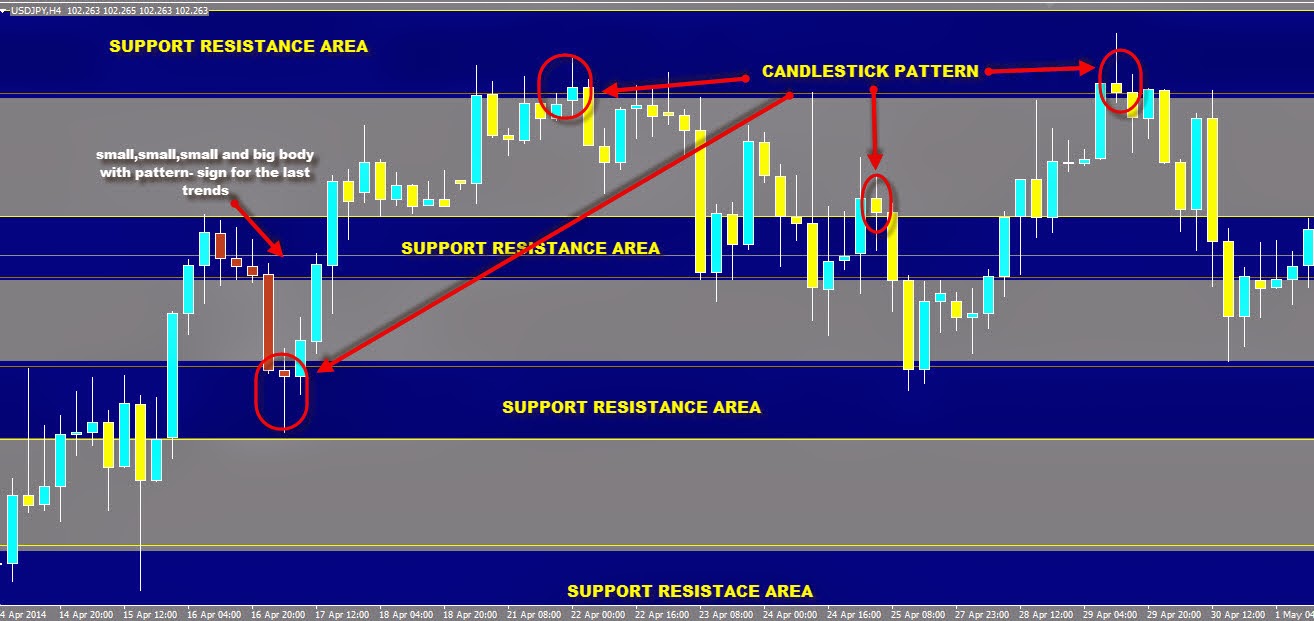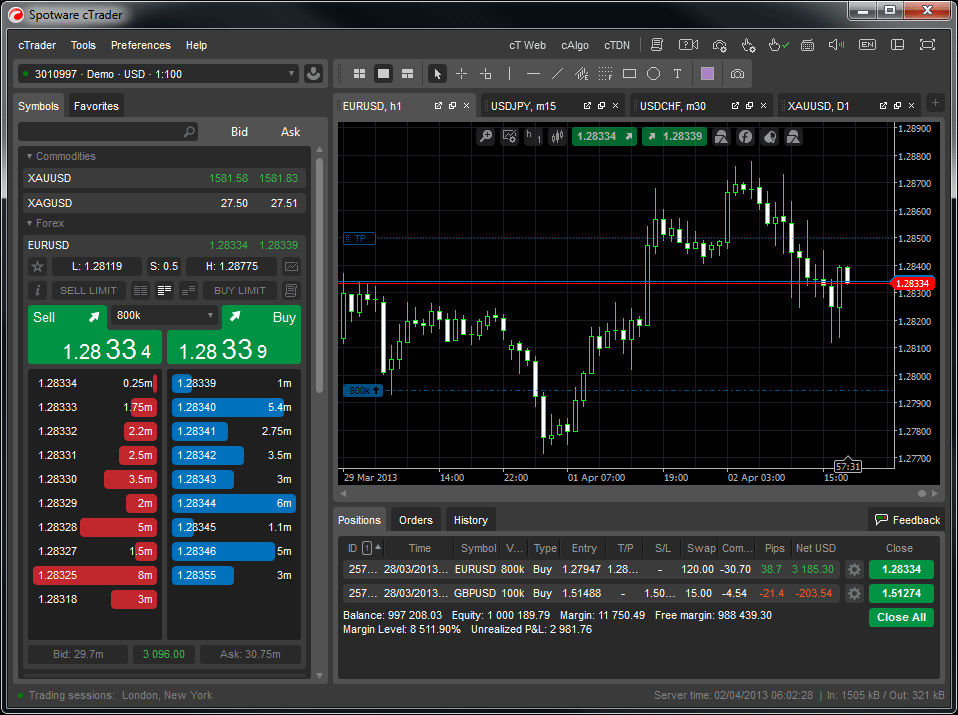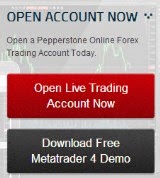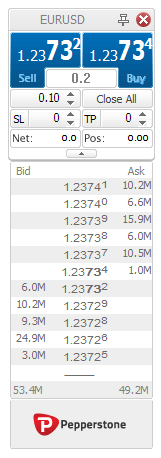Brokers Criteria
Due to the ever-expanding interest in trading currencies by the public, new brokers are constantly popping up in the trading world. This gives the current trader many advantages over traders that participated in the markets just a few short years ago. Every day it seems that there is a new and improved version of the forex broker, and as such it can lead to a lot of advantages due to competition, but it can also be very confusing at the same time for both new and experienced traders alike.
Add to this the issues of reviews by disgruntled traders, and the situation can be quite daunting as there are literally hundreds if not thousands of firms to choose from, and several different business models as well, meaning that the decision can be a very complex one. In this guide, we will look at some of the most important aspects of choosing a broker in the hopes of clearing up the decision making process you will undoubtedly find yourself in at one time or another.
Table of Contents
1. Regulation
2. Capitalization
3. Popular Platforms and How to Choose the Right One for You
4. Broker Types and their Spreads or Commissions
5. Account Types
6. Customer Service
7. Additional Services
8. What are the right Questions to ask Before Opening an Account?
9. Conclusion
A regulated forex broker is safer
There are hundreds of online forex brokers and many of them are in fact scams cheating on their clients. To avoid unnecessary problems, it is better to entrust money with a regulated forex broker. Regulated forex brokers are under supervision of a trustworthy regulatory authority. The strictest broker regulations exist in Northern America, Europe, Australia, and Japan. So, before depositing any money on your forex trading account, check whether your broker is registered with at least one of the following agencies:
Australia:
ASIC, AFSL
Canada:
CIPF, OSC, BCSC
Denmark:
Danish FSA
Germany:
BaFin
Hong Kong:
SFC
Japan:
FFAJ
Spain:
CNMV
Sweden:
FI
Switzerland:
ARIF, FDF, GSCGI
United Kingdom:
FSA
United States:
NFA,
CFTC
Some forex trading brokers are even regulated in several jurisdictions at the same time. For example,
PEPPERSTONE is regulated by
ASIC(Australian Securities & Investments Commission), Australian financial services licence (AFSL) No. 414530. But this is an exception and most online forex brokers are regulated only in their home country. Obviously, more oversight brings also more safety for your money. You can easily filter our list of forex brokers to include only the ones that are regulated.
Regulation
Without a doubt, the most important thing your broker must have is proof of regulation. The problem with unregulated brokers isn what it once was, but it still does happen from time to time. If you choose to do business with an unregulated broker, you are opening yourself up to a whole slew of potential problems. For example, if you have to dispute a trade or action facilitate by the broker, who do you turn to? If they are unregulated, you are going to have very little if any legal protection from fraud.
Of course, simply being regulated isnenough. You need to have a broker that is regulated in a country where the law is followed and legal protection is strong. For example, you are going to find that a broker regulated in the United States is more likely to be compliant than one that is regulated in a less industrialized and advanced legal framework. Recently, there was a broker that was based out of a country that was in the middle of a civil war at the time. Needless to say, this is absolute folly and very reckless for a trader to deposit money at this broker, no matter how tight their spreads were. The fact is that tight spreads won do you much good if you cannot get your money back! This could be the case either by fraud, as there is very little legal protection, or by an overthrow of the government. As a general rule, if you don feel safe visiting the country, depositing your money there isn a good idea either!
Capitalization
When picking the broker to facilitate your trades, being well-capitalized is of utmost importance. There have been brokers in the past that have had issues with their capital, and as such can be risky places to hold your funds. In fact, this was so pervasive in the past that even in the United States there were firms that held less than $100,000 a few years ago! The CFTC has a website that lists the capitalization of all of its members that is updated monthly. The regulations in the US have been tightened recently to require firms to have capitalization of over $20 million in order to operate. Other countries in the EU and other industrialized nations are following suit as forex trading becomes more legitimized as another market such as stocks, bonds, and options. This trend should continue into the future, so the capitalization issue will become less and less of an issue in the industrialized world. This is further reason to stick to the major markets when finding a broker. As a side note, you can often find out the capitalization of a firm by looking at regulatory body websites.
Popular Platforms and How to Choose the Right One for You
While there are literally hundreds of trading platforms to choose from, there are some major ones that you will see time and time again. Without a doubt, the most popular one is MetaTrader 4. There is a MetaTrader 5 out as well, but it is still in its infancy. The MT4 platform allows traders to import trading robots, hundreds of free indicators that are readily available on the Internet, and many more features. It is offered for free, and it estimated to facilitate over 85% of the retail trades in the forex market. Because of this, there is a real strong chance that you will either be using it, or at least have the opportunity to use it with whatever broker you choose.
There are other platforms such as ACT Forex, which has many of the same features as MetaTrader 4, and is well-known and used quite a bit in Europe. The platform is laid out a bit differently, but can do most of what MT4 does, so at this point it comes down to personal preference.
There are many other options out there as a lot of firms will have their own trading platforms. GFT is a prime example as they have a platform called DealBook 360, which has won many awards. It is a shell program that uses ESignal charting, which makes it very graphically pleasing. Speaking of ESignal, there are many trading platforms like it that are available for a monthly or one-time price. The amount of add-on and standalone platforms is staggering if you look online.
In reality, picking a trading platform is going to be a very personal choice, but by far the best way to make that decision is to try demo accounts in that platform. You will find that a lot of the same basic features are found in all of them, and it is graphically representations and indicators that tend to make the difference with these different platforms. As a general rule, if a demo isnt available not worth dealing with.
Broker Types and their Spreads or Commissions
There are two basic types of brokers that you can deal with when trading forex. The first model, the dealing desk is sometimes called a market maker. This dealer will often take the other side of your trade, as they will first try to match your order with another customer, but will be the other side of the trade if necessary. This type of dealer typically will make their money based upon the spread of the trade. For example, there might be a 2 pip spread in the EUR/JPY market, but the broker only offers it as a 4 pip spread, thus pocketing 2 pips for facilitating your trade. As a general rule, there are no other costs involved in trading with this broker. Of course, there is potential for the dealer to manipulate the market, and slip you on fills, but these practices are becoming more and more uncommon as the markets mature, and the regulatory bodies are very strict on these types of dealers. Again, another reason to trade with a dealer based in an industrialized country.
The other type of broker is an actual true broker. The ECN, or Electronic Communications Network, allows trader to match orders with other traders electronically. The broker will not take the other side of the trade. So for example, if you are bidding the EUR/USD at 1.4056, and there is no seller there, you simply won get filled as there is nobody to sell it to you at that price. (This is rare, but it can happen.) Many people say that the ECN has no interest in the results of your trades, but this is not true. In fact, the ECN wants you to do well so that you will continue to trade as they make their money off of the commissions they charge for each trade. Because of this there is no markup in the spread to compensate the broker. You typically will see tighter spreads, but there will be an added transaction cost in the form of a commission for facilitating the trade.
Let us consider the following example:
You see an opportunity in the AUD/USD pair, and you believe it is going to rise in value. Because of this, you are ready to enter long position. If you had two separate brokers, you could have the following two scenarios possible:
Traditional Dealer:
You buy AUD/USD with a 5 pip spread, and thus start out the position 5 pips down. However, the total cost is 5 pips to place this trade. So in order to make money, you need the market to move at least 5.1 pips in your favor. Some dealers offer variable spreads, so this could change in the middle of the trade as liquidity increases or decreases, but in order to keep things simple, we assume that the spread is a fixed one. If you are trading at $1 a pip, this trade costs you $5 to do. If you are trading standard lots, it costs $50. As you can see, the trade size makes a massive difference.
ECN:
In the same set up, you see that the ECN broker is offering the same rates, but with only a 1.5 pip spread. However, with this broker you are required to pay $2.50 for each trade. Remember, when you open the trade that is one trade. When you close it that is another. So when they say per turn, you simply should double the amount to understand what the trade will cost you.
Much like the dealer situation, the value in this spread will depend on the size of the trade. For example, if you are trading at $1 a pip like the first example above, the trade will cost you $1.50 for the spread difference, $2.50 to open it, and $2.50 to close it. This is a total of $6.50 for the total position, which is actually more expensive than the dealer. However, if you compare it to the trade above that involved the standard sized lot, the cost is $15 for the spread, $2.50 to open the trade, and $2.50 to close the trade. This totals $20, saving you $30 over the dealers price!
As you can see, it all comes down to the trading size you will be doing.
Margin can vary from broker to broker, and country to country. As of the time of this writing the US had recently brought down the allowable leverage for its citizens to trade. Because of this, a US broker will only allow 50 to 1 leverage, which means you need to place 2% of the value of the trade for margin. For less liquid trades, it has been dropped down to 20%, meaning a 5% margin amount is necessary. Contrast that with countries around the world that allow unlimited leverage, and you can see it as high as 700 to 1! Because of this, margin requirements can very drastically, depending on your broker.
Account Types
There are many different types of accounts you can get at the various brokers available to you. Some of the most common include standard, mini, micro, and demo. The differences all basically come down to the trading size, which can also vary from broker to broker. For example, a standard account might mean that you have to trade full lots or more on your trades at one broker, but at another broker it may mean that you simply have the ability to trade them, but can trade much smaller amounts.
The most common difference is the spread that brokers will charge you. Under most circumstances, there will be lower spreads for the larger account. (When there is one.) Another common difference is that some brokers will offer value-added services for larger accounts as well, which can also be called PlatinumPremiumor œGold. Make sure to see if there are any differences at the broker of your choice listed on the website before opening your account.
Customer Service
Customer service is paramount when it comes to dealing with a broker. Remember, they need you “ not the other way around. If you do not see a clear route to contact someone at the brokerage on the website, this should be a huge red flag when it comes to using them. The professional firms will have several different ways to contact them including phone, email, live chat, and many others. If you ever run into a problem, the last thing you want to do is have an issue getting a hold of your broker in order to fix it. If the broker only has limited hours of customer service, that is also a sign that bad things could come of the business relationship.
Additional Services
Value-added services are starting to become the norm as the competition between forex dealers heats up. The competition dictates that many of them are offering analysis, news, signals, and even education for free. Some will ask that you deposit a certain amount before offering all of these features, but they are starting to become a regular feature of dealers. Some of these technical analysts are even well-known, such as Kathy Lien and Boris Schlossberg from GFT. Brokers that are ECNs typically will offer less, as the account size needed to trade those types of accounts normally suggests that the trader is a little more sophisticated. However, even in these firms there is a bit of a change in that thinking.
What are the right Questions to ask Before Opening an Account?
Asking the right questions before opening an account is absolutely vital if you wish to avoid issues down the road. The list of questions you should ask any broker before joining include:
Are you regulated? If so, in which countries?
What currency pairs do you offer?
Is the money deposited separated from operational capital, in other words “ is it segregated?
Do you have a dealing desk, or are you an ECN?
What types of customer service do you offer, and what methods can I contact them through? What times are they available?
What trading platforms do you offer? Is there a mobile application as well?
What is the deposit/withdraw process?
Conclusion
As you can see, there is a lot to think about when choosing a broker. However, by using these simple guidelines, you should be able to narrow down the list quite a bit. A lot of it comes down to personal preference as well, and what your trading needs and wants are. For example, you may want to trade the CAD/JPY pair, a market that isn always offered by all brokers. Maybe you prefer MetaTrader4 over other platforms, and as such would avoid any broker that only allows trading through their own platform. As you can see, preference can play a huge part in all of this. But by paying attention to the important issues about regulation and capitalization as well, you can find the right broker for you.
Nak Belajar TEKNIK SWING - FOREX???






























